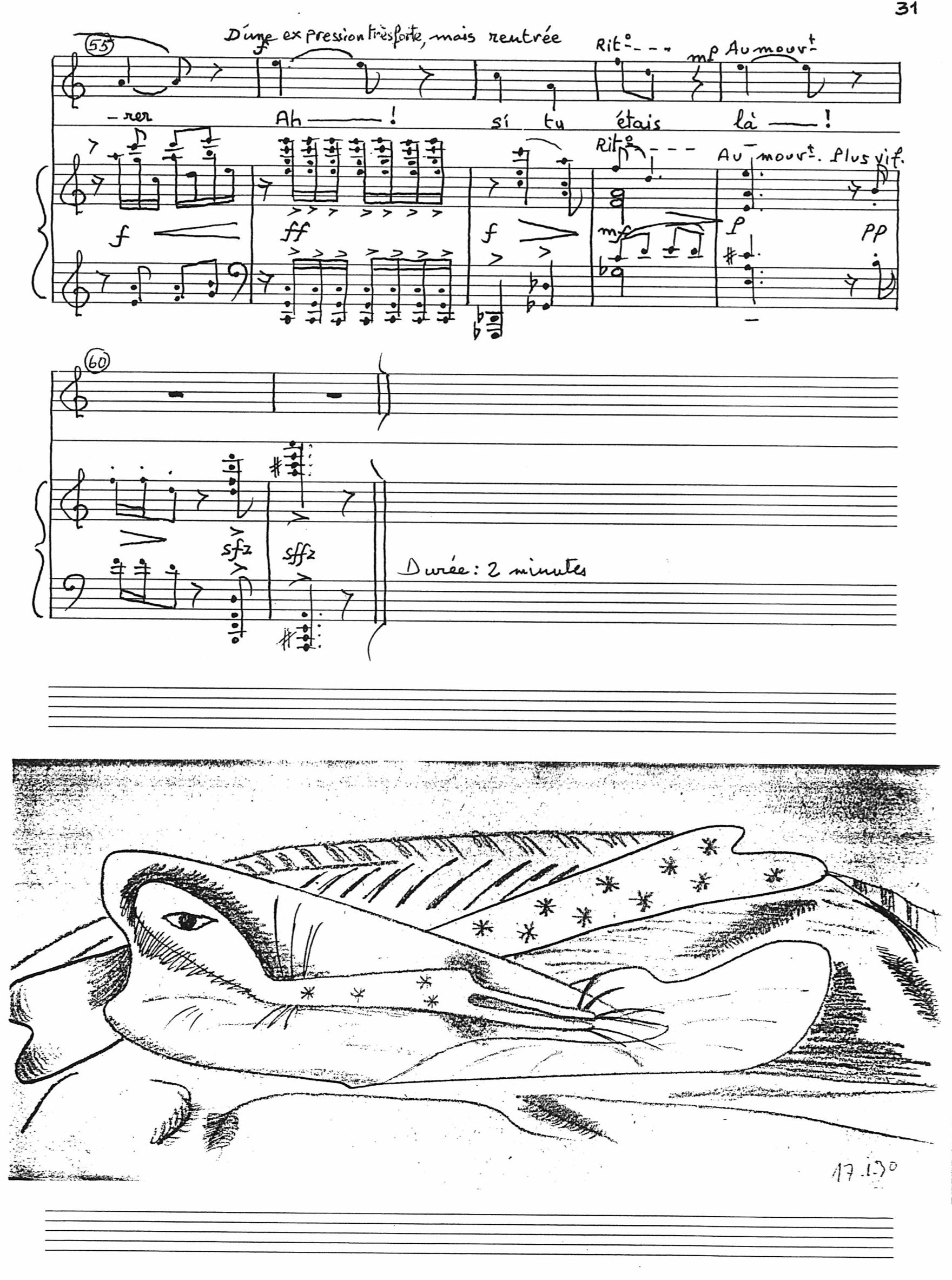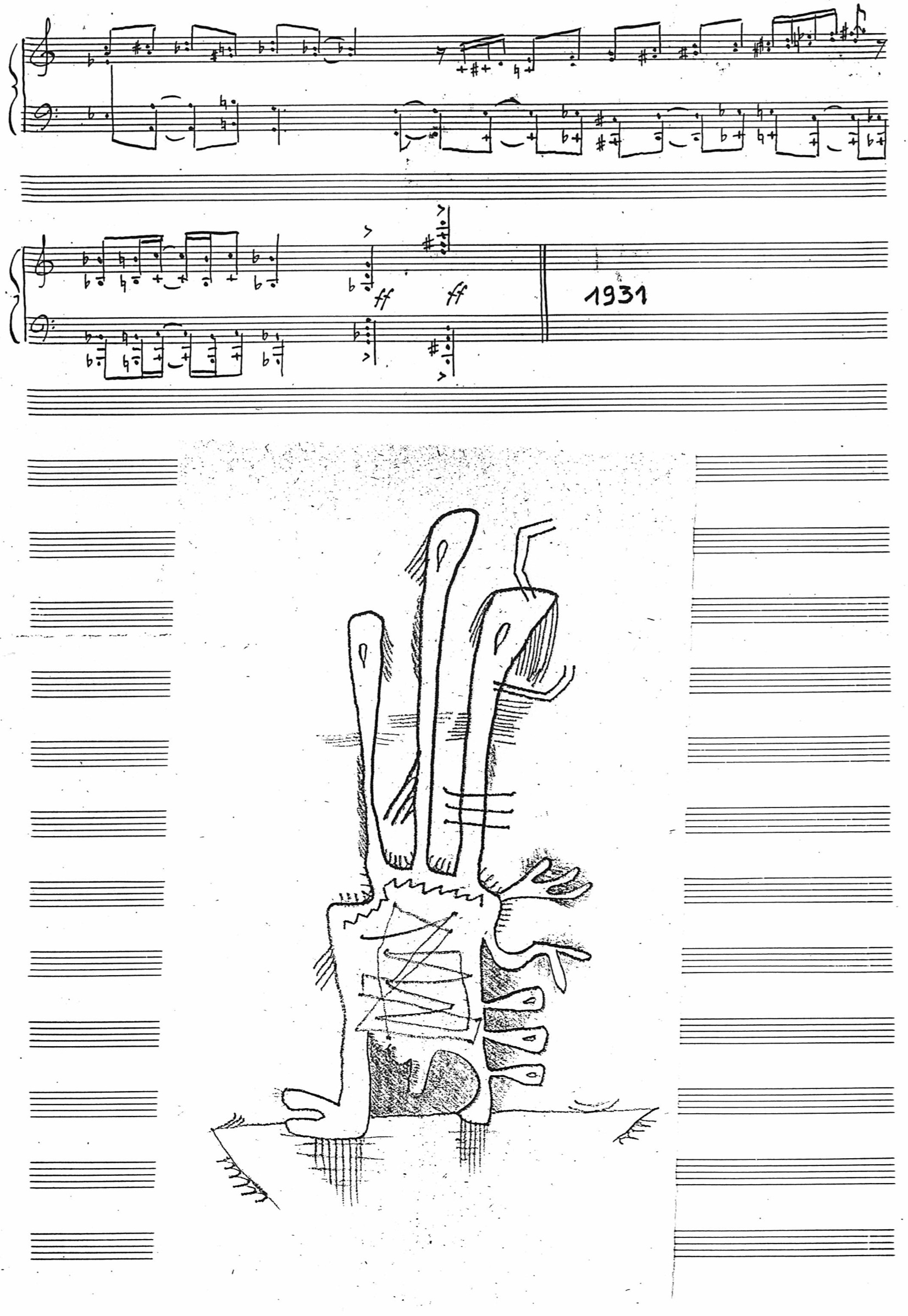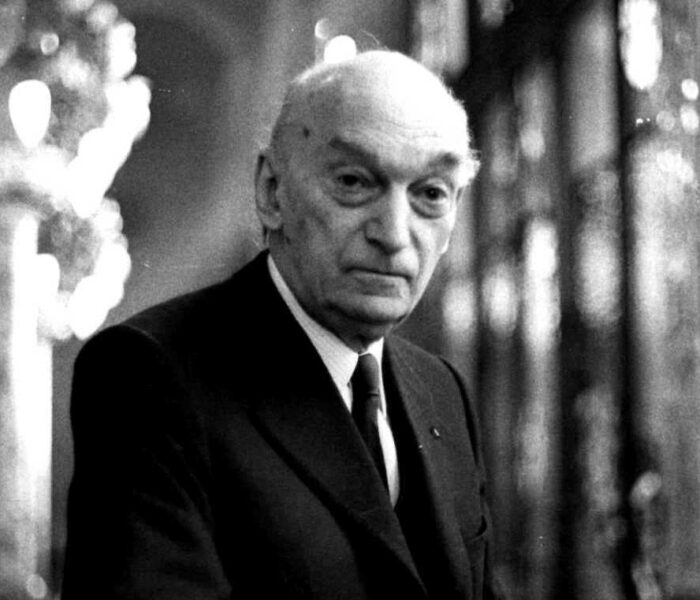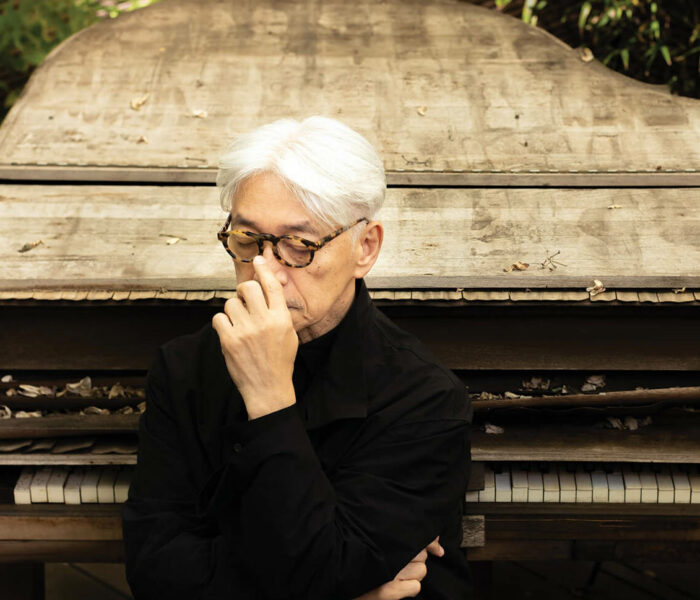« Je trouve que Satie est un talent mineur et inexistant. »*
Il n’y a certainement plus besoin de défendre Erik Satie de ces avis péremptoires qui ont émaillé tout le siècle passé. Il est aujourd’hui un des compositeurs français dont l’influence majeure ne cesse de s’étendre : Satie fait aujourd’hui partie de la Grande Histoire de la musique au même titre qu’un Ravel ou un Messiaen. Sa vie regorge d’anecdotes (plus ou moins vraies), d’échecs et de phrases humoristiques qui le rendent attachant, unique et proche de nous. Il sera toujours contesté – c’est le propre des génies – mais presque cent ans après sa disparition, traçons un panorama non exhaustif des enfants musicaux de ce musicien médiéval et doux, égaré dans ce siècle.**
Alfred Eric Leslie Satie, dit Erik Satie, n’a pas vingt ans quand il compose en 1886 ses Quatre Ogives pour piano seul. Musique mystique aux harmonies héritées du plain-chant grégorien qui fit peu de bruit lors de leur publication en 1889. Aujourd’hui encore, en les écoutant, cette musique fascine par sa simplicité, sa profondeur et sa modernité. Dans une France dominée par l’influence massive de Wagner contrée par une école française représentée par Camille Saint-Saëns, le jeune Erik Satie, seul sous les toits de Montmartre, invente la musique du futur.
Ses illustres contemporains
« Monsieur précurseur » comme l’appelait Claude Debussy admit l’influence que Satie eut sur lui. En 1887, à l’Auberge du Clou à Montmartre, Satie tient le piano et joue sa Deuxième Sarabande : c’est là qu’il le découvre pour la première fois. Une amitié orageuse naît qui durera jusqu’à la mort de Debussy en 1918. Que cela soit dans la Sarabande de la suite Pour le piano ou la partie centrale du prélude La cathédrale engloutie, l’influence manifeste de Satie chez Debussy se décèle aisément et la chronologie est claire. Afin de le soutenir et d’aider à mieux le faire connaître, il orchestrera la première et la troisième des Gymnopédies.
Ces célébrissimes Gymnopédies laissèrent sur Maurice Ravel également une certaine empreinte qui les trouvaient « très en avance sur leur temps » (1888) ; bien plus tard il s’en souviendra encore dans ses Entretiens de la Belle et de la Bête issus de Ma mère l’Oye qu’il appelait amicalement « la Quatrième Gymnopédie. »
La relève
Erik Satie vécut assez longtemps pour bénéficier dans les dix dernières années de sa vie d’une reconnaissance auprès d’une jeunesse soucieuse de s’extraire d’une nouvelle musique naissante aux antipodes de l’esprit Satie : la musique atonale pré-sérielle. Avec Jean Cocteau en 1916, il devient une des figures tutélaires du Groupe des Six (Francis Poulenc, Darius Milhaud, Louis Durey, Georges Auric et Arthur Honegger et Germaine Tailleferre, sa “fille musicale” comme il l’appelait alors) et en 1923 cinq compositeurs (Henri Sauguet, Henri Cliquet-Pleyel, Roger Désormière, Maxime Jacob et Jacques Benoist-Méchin) fondent l’École d’Accueil qui porte le nom de la ville de banlieue parisienne emblématique où le Maître réside depuis 25 ans. Ce groupe et cette école constitués de personnalités contrastées auront à cœur de préserver un chemin musical initié par Satie : une musique sincère, dépouillée d’artifices, aux lignes mélodiques claires non dénuées d’humour et aux résultats harmoniques aussi audacieux.
Un passeur
S’il en est un à qui Satie doit beaucoup, c’est bien Robert Caby. Peu connu aujourd’hui, il est pourtant un acteur majeur dans la reconnaissance du compositeur. Poète, compositeur, musicologue et dessinateur surréaliste, il a 18 ans en 1924 quand il rencontre le Maître à la santé déclinante et déjà installé à l’hôpital Saint-Joseph. C’est Darius Milhaud qui fait l’intermédiaire. Il devient son confident et partagent tous deux des idées politiques communistes. Sa vie est émaillée de rencontres artistiques, littéraires et politiques ; il voyage en URSS et entretient même une correspondance avec Trotsky. En 1964, il travaille avec les éditions Salabert et la Bibliothèque Nationale afin de sortir des œuvres inédites de Satie jamais publiées. Il corrige, complète parfois et supervise l’essentiel de son œuvre pianistique. On lui doit la découverte des trois dernières Gnossiennes ou les Nouvelles pièces froides entre autres merveilles. Sa propre musique est restée totalement méconnue mais à la lecture de certaines pièces pour piano, il est impossible de ne pas déceler une forte influence satiesque. Un compositeur à redécouvrir pour tout amateur de Satie.



John Cage
L’histoire est célèbre. Il faut attendre 1963 pour qu’une des œuvres les plus emblématiques de Satie soit créée : les Vexations. Et ce à New-York par le compositeur d’avant-garde John Cage qui voit en Satie un père spirituel. Cette œuvre redécouverte après le décès du compositeur par Henri Sauguet n’intéressera les Français que bien après sa première exécution. Les Vexations préfigurent – une nouvelle fois – la musique de demain en demandant à son interprète de répéter un nombre de fois frisant la folie un court motif peu varié et relativement austère : « Pour se jouer 840 fois de suite ce motif, il sera bon de se préparer au préalable, et dans le plus grand silence, par des immobilités sérieuses ». Satie invente le minimalisme intégral. John Cage défendra toute sa vie l’œuvre du Maître, lui rendant hommage à travers plusieurs de ses compositions (Swinging et Perpetual Tango sont des dédicaces aux Sports et divertissements) et arrangeant aussi son Socrate pour deux pianos. Il contaminera de sa passion pour Satie des compositeurs comme Morton Feldman et Virgil Thomson. Une autre pièce récemment découverte, très peu connue corrobore notre propos qui rend hommage aux Gymnopédies : « Peut-être que je peux être blâmé pour mon dévouement à Satie. Mais je ne pourrai jamais y renoncer… Si mes idées sombrent dans la confusion alors je dois cette confusion à l’amour. »
En forme de minimalistes
Le minimalisme n’est pas né avec Satie et d’ailleurs ce terme valise devient encombrant pour tous ceux sur qui on l’appose mais alors pourquoi tant de compositeurs américains dits de cette esthétique reconnaissent en Satie un arrière-grand père musical ? Le minimalisme alla Satie est une utilisation d’un matériau musical simple, épuré se répétant (bien souvent) et qui ne rougit pas de mettre en valeur une mélodie et des harmonies limpides et vidées d’un post-wagnérisme complexe et un sérialisme envahissant tout le XX°. Les Vexations, les Gnossiennes, les Ogives et les Gymnopédies sont ainsi du minimalisme avant l’heure. Terry Riley, La Monte Young, Philip Glass, Meredith Monk, Tom Johnson et Steve Reich sont des enfants de Satie dans leur refus d’adhérer aux diktats musicaux de leur époque et se sont comme lui intéressés aux musiques populaires contemporaines (jazz et pop music). Les minimalistes Anglais ont eux aussi été sensibles à l’esprit iconoclaste de Satie : l’ambient de Brian Eno s’inspire de toute évidence des provocantes musiques d’ameublement du Français. Michael Nyman, Howard Skempton, Cornelius Cardew, Christopher Hobbs et Gavin Bryars n’ont aucun souci pour souligner l’influence satiesque dans leurs musiques. Gavin Bryars a d’ailleurs récemment composé des Nouvelles Gnossiennes pour le festival Superspectives.
Dans leur coin
Deux critères peuvent réunir Federico Mompou, Frédéric Lagnau, Emahoy Tsegué – Maryam Guébrou et Dominique Lawalrée autour d’Érik Satie : ils ont tous les quatre un tropisme spécifique pour le piano et ont chacun dans leur coin créé une musique unique, sensible et en dehors de toute école stylistique. Le Catalan Federico Mompou a exploré toute sa vie les confins du silence. Sa musique, libre des barres de mesures et aphoristique, doit à Satie la possibilité d’écrire une musique en dehors du temps et instinctivement séduisante. Le Français Frédéric Lagnau, minimaliste méconnu a hérité de Satie un amour des titres et références humoristiques (Ça va son dire ; L’écho des Pavanes ; À mesure et au fur ; Cérémonie ondulatoire ; Passage à nouveau ; Après la Révolution je suis passé chez moi etc.) mais aussi d’une grande liberté de forme. La compositrice éthiopienne agée de 98 ans a composé, au calme d’une petite cellule de l’Église orthodoxe éthiopienne de Jérusalem une douce musique méticuleuse et mélancolique qui lorgne vers Satie mais aussi vers Chopin, le blues et la musique de ses origines. De Satie, elle retient cette langueur lancinante que l’on retrouve dans ses Pièces froides ou ses valses de jeunesse. Le Belge Dominique Lawalrée sera, quant à lui, très explicite sur l’influence satiesque. Il expérimente seul une musique minimale, électronique, répétitive et expérimentale comme Satie expérimentait, chez lui, ses harmonies séculaires. La musique de Lawalrée doit aussi beaucoup à Satie pour la poésie de ses titres (et textes), de ses inspirations populaires (les Beatles, Robert Wyatt, le jazz) et sa profonde et sincère spiritualité qui confinera, à la fin de sa vie, au mysticisme.
Aujourd’hui
Rone, Bernard Campan, Philippe Katerine, Yuksek, Bouli Lanners et tant d’autres artistes, acteurs, écrivains aiment, défendent et reconnaissent en Satie un modèle. Le musicien éclectique et aux mille références Pascal Comelade, a fait de Satie depuis ses débuts une de ses plus fidèles inspirations. Dans son dernier album Le Non-Sens du rythme, l’homme aux parapluies est toujours présent comme le montre la pièce Cimetière de la photographie. Dans les années 90 un jeune Français du nom de Sebastian Gandera sort quelques cassettes et disques d’une façon discrète et timide. En 2019, un label australien (Efficient Space) sort une compilation de ses pièces pour piano expérimentales mêlant sons ré-enregistrés et ambiances du quotidien. Satie est ici présent partout : une sensibilité immédiate, une évidence mélodique et un je-ne-sais-quoi de timide dans le jeu qui nous fait entrer directement dans l’intimité du musicien. La compositrice australienne Elena Kats-Chernin compose en 2018 Unsent Love Letters, Meditations On Erik Satie un cycle de 26 pièces pour où elle met en musique toutes ces lettres d’amour écrites par lui et retrouvées après son décès – dont aucune n’a été envoyée. Cela forme un recueil de pièces étranges et sensibles qui est un des plus beaux hommages au Maître d’Arcueil.
François Mardirossian
*Pierre Boulez, interrogé par Michel Archambault dans ses Entretiens avec Pierre Boulez, Paris, 2012, Folio
** Claude Debussy, sur une dédicace à Erik Satie
Photo Maison Satie © Tom Le Masson Banning Lover



)



